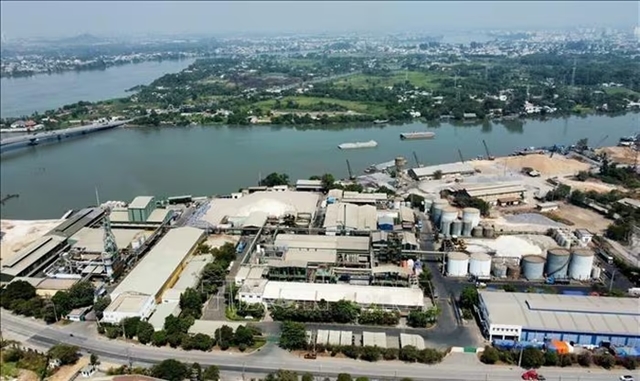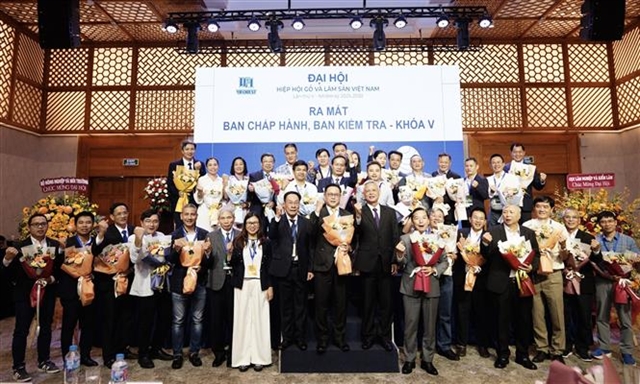 Features
Features
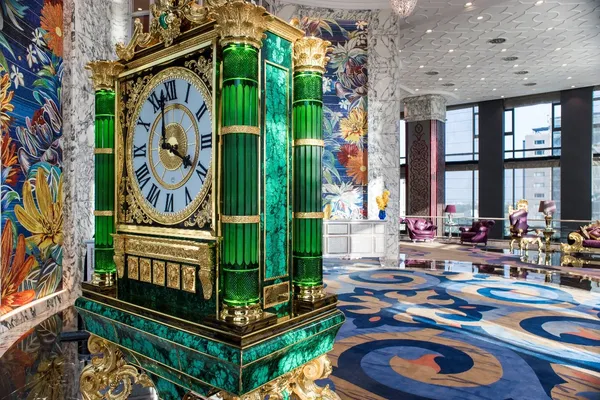
Scientists from the Institute of Imperial Citadel Studies (IICS) studied and excavated the relic site of Thăng Long Imperial Citadel in Hà Nội for more than a decade, and they recently released the results.
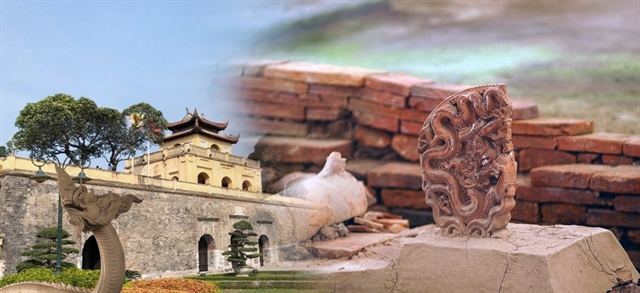
|
| The Thăng Long Imperial Citadel was built in the 11th century by the Lý Dynasty, marking the independence of Đại Viêt (Great Việt), the ancient Vietnamese kingdom. Photo nhandan.vn |
Ngân Khánh and Mai Phương
Researchers have recreated a palace from the Lý Dynasty, giving an insight into the architectural splendour on show in Việt Nam more than 1,000 years ago.
Scientists from the Institute of Imperial Citadel Studies (IICS) researched and excavated the relic site of the Thăng Long Imperial Citadel in Hà Nội for more than a decade, and they recently released the results.
The institute has restored in 3D the architectural form of the palace of the Lý Dynasty (1009–1225) era as the first step for further in-depth studies of the Thăng Long Imperial Citadel.
"It will help us visualise more clearly and feel more deeply about the magnificent beauty of the ancient Thăng Long Imperial Palace architecture," said Professor Bùi Minh Trí, Director of the IICS.
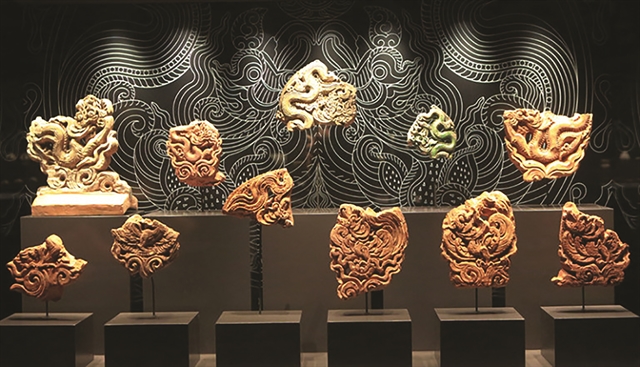
|
| Dragon specimens of the architecture under the Lý Dynasty were found during archaeological excavations in Thăng Long Imperial Citadel. Photo courtesy of the IICS |
Trí said in the past decade, the research to 'decipher' the architectural mysteries of the Vietnamese royal palaces under the Lý Dynasty was conducted with great enthusiasm by scientists, based on archaeological relics and historical clues.
"However, to finish the research on the relic and to make it appear as real in front of the viewer's eyes was really a big, big challenge for scientists because the ancient imperial architecture under the Lý, Trần and Lê dynasties in Việt Nam has been almost lost as it was not recorded in history," he said.
"We do not have any drawings of the architecture of this period. The assertion of major architectural works in the Imperial Citadel of Thăng Long is mainly based on archaeological documents," Prof Trí added.
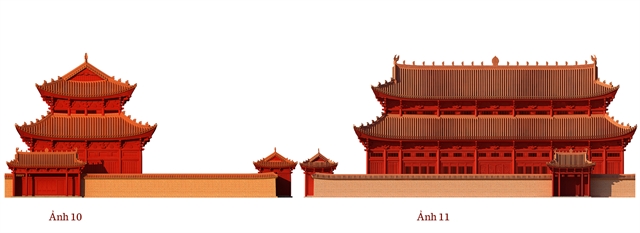
|
| The Institute of Imperial Citadel Studies (IICS) has restored in 3D the architectural form of the palace of the Lý Dynasty (1009–1225) as the first step for further in-depth studies and preservation of the Thăng Long Imperial Citadel. Photo courtesy of the IICS |
The first works of restoration were carried out and presented at the archaeological display area in the basement of the National Assembly House in 2016, including parts of the 3D images.
The initial research results and restoration were not complete at the time and were displayed only to special viewers. The studies were officially announced by the IICS in April this year and now the restoration display, including the 3D images, is open to the public.
"That was the first time the 3D images of the Lý Dynasty's palace of more than a thousand years were shown," Prof Trí said, referring to the National Assembly display.
The 3D presentation of the palace's architecture had helped us clearly visualise and feel more deeply about the magnificent beauty of the architecture in the ancient Thăng Long Imperial Citadel," he added.
Discoveries underground at 18 Hòang Diệu Street from 2002 to 2004 and the construction area of the National Assembly House in 2008-2009 exposed 53 vestiges of architectural foundations, including seven surrounding wall foundations and six wells of Thăng Long Capital under the Lý Dynasty.
This was the most important discovery in the history of Vietnamese archaeology and secured World Cultural Heritage status for the Thăng Long Imperial Citadel from UNESCO in October 2010, the expert said.
Since then, although archaeological clues have demonstrated the vestiges of the Lý Dynasty palace's architectural foundations underground in the Thăng Long Imperial Citadel relics were elaborate wooden structures with tiled roofs that are rarely found anywhere else, there was not enough evidence for identifying the original architecture of the palace like in Beijing, China, or like the Changdokung of Seoul, South Korea, and Nara of Japan.
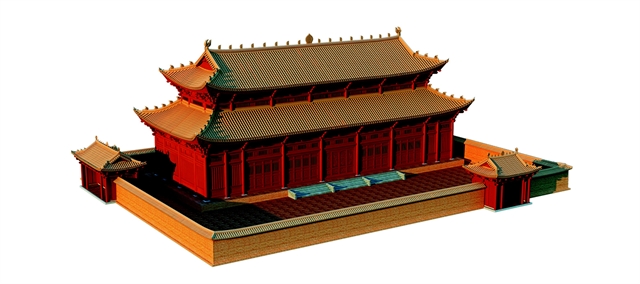
|
| Part of the Lý Dynasty palace in 3D form. -- Photo courtesy of the IICS |
This meant that for 10 years after it won UNESCO recognition, researchers were unable to fully recreate a unique image and the beauty of the ancient palace architecture, many experts admitted.
“To decipher this mystery, the institute applied many research methods such as re-investigation and excavation of the 18 Hoàng Diệu Street relic site; studying decoding types and functions of architectural roof tiles; investigating and studying architectural models preserved in museums; research on wooden artefacts excavated at the relic site; study historical data, especially comparative studies with ancient capital architecture in China, Japan and South Korea and studies on ancient architecture in northern Việt Nam," Prof Trí said.
"The institute's research helped decipher the secrets of the Thăng Long Citadel palaces, marking an important milestone and opening up opportunities for further research on other dynasties."
The professor said ancient architecture type locally called Đấu Củng (Dougorg), a term that originated from China, was key to the palace's structure.
"This is a type of roof-supporting structure consisting of two components named Đấu (Dou) and Củng (Gorg). The former acts as a pedestal, while the latter is like an elbow with the role of a support arm for another structure above," he said.
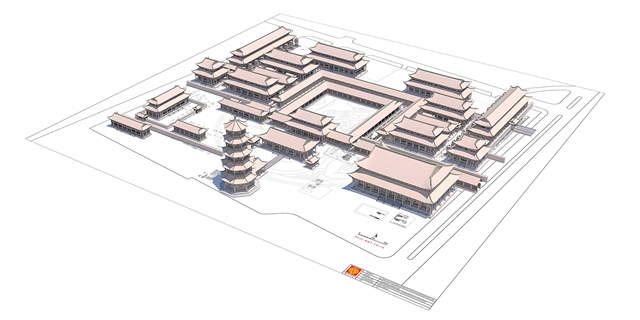
|
| Drawing of the entire imperial palace under the Lý Dynasty in the ancient Thăng Long Imperial Citadel. Photo courtesy of the IICS |
With the road ahead still very long, scientists from the IICS have vowed to continue their research to understand the functions and roofing techniques of tiles excavated at the Thăng Long Citadel.
On that basis, they will focus on restoring the roof morphology of the architecture of the Đại La, Đinh-Early Lê, and Trần dynasties, especially the Kinh Thiên Palace and the Main Palace in the Forbidden City of Thăng Long under Early Lê, from the 15th century.
“There are many other mysteries that need to be discovered. Now, we can imagine how is the architectural form of the Lý Dynasty but we still have to work more on the details of each space and subdivision to find their different functions.
"We will decipher more deeply, go into each small issue with hope to be able to tell the full story of the Lý palace architecture to the public," Prof Trí said.
Prof Tống Trung Tín, chairman of the Việt Nam Archaeological Association, said: "The project of restoration and 3D displaying relics of the Lý Dynasty as well as other presentations under the basement of the National Assembly House show serious scientific investment with creative and unique ideas, creating an exhibition area meeting international standard requirements."
"This has opened an opportunity for archaeology community to get closer to the public, contributing to spreading pride among the public about our ancestors' history," Tín added.
The Thăng Long Imperial Citadel was built in the 11th century during the Lý Dynasty, marking the independence of Đại Viêt (Great Việt), the ancient Vietnamese kingdom (1010-1789).
It was built on the remains of a Chinese fortress dating from the 7th-9th century, on drained land reclaimed from the Red River Delta in Hà Nội.
The citadel was a centre of regional power for almost thirteen centuries. VNS


